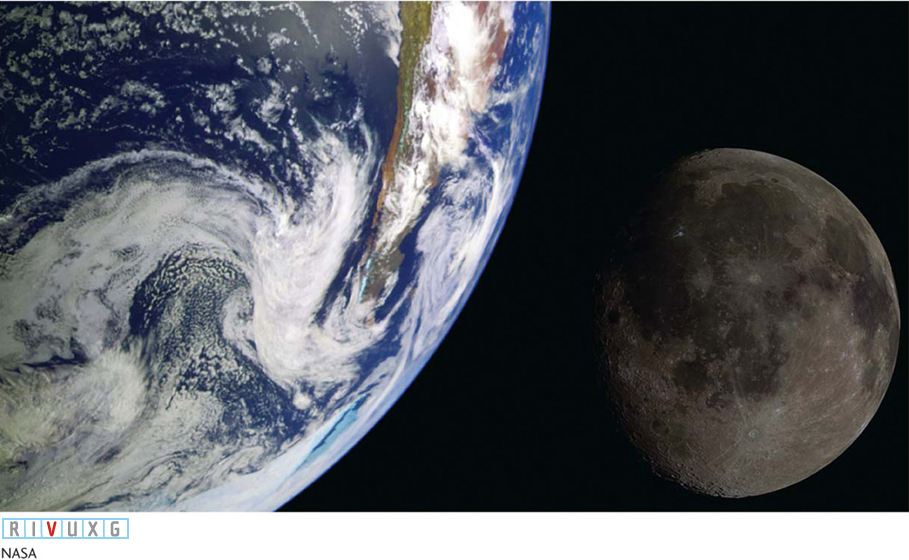Chapter Introduction
125

The Terrestrial Planets and Their Moons
WHAT DO YOU THINK?
 Can Earth’s ozone layer, which has been partially depleted, be naturally replenished?
Can Earth’s ozone layer, which has been partially depleted, be naturally replenished? Do we see all parts of the Moon’s surface at some time throughout the lunar cycle?
Do we see all parts of the Moon’s surface at some time throughout the lunar cycle? Does the Moon rotate and, if so, how fast?
Does the Moon rotate and, if so, how fast? What causes the ocean tides?
What causes the ocean tides? Which terrestrial planet—
Which terrestrial planet—Mercury, Venus, Earth, or Mars— has the coolest surface temperature?  Which planet is most similar in size to Earth?
Which planet is most similar in size to Earth? Which terrestrial planet—
Which terrestrial planet—Mercury, Venus, Earth, or Mars— has the hottest surface temperature?  Is life known to exist on Mars today?
Is life known to exist on Mars today?
Answers to these questions appear in the text beside the corresponding numbers in the margins and at the end of the chapter.
126
In this chapter we first compare basic properties of all eight planets. Then we explore the terrestrial worlds (Mercury, Venus, Earth, and Mars) in detail. The much larger gas giants, Jupiter and Saturn, and the intermediate-
In this chapter you will discover
that the Earth’s interior and surface are constantly changing
how Earth’s magnetic field helps protect us
what made the craters on the Moon
how the Sun and the Moon cause Earth’s tides
that water ice has been found on the Moon
Mercury, a Sun-
scorched planet with dormant volcanoes, a heavily cratered surface, and a substantial iron core Venus, perpetually shrouded in thick, poisonous clouds and mostly covered by gently rolling hills with few craters
Mars, a red, dusty planet that once had running water on its surface and may still have liquid water underground
 Earth and the Moon as seen from space.
Earth and the Moon as seen from space.